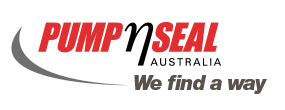6 Reasons Bearing Isolators Leak Lubricant
Look out for these common pitfalls, and don’t assume that a lubrication leak means a seal failure.
by Neil Hoehle
August 9, 2017
A well-known technique for increasing pump reliability is sealing the bearing housing with non-contacting bearing isolators rather than contact seals. Because contact seals use contact as their sealing method, they have a more limited life expectancy, since they can wear at the point of contact or groove the shaft. When this occurs, lubricant will escape to atmosphere and contaminants will enter the bearing housing, leading to bearing failure. Though more expensive, bearing isolators effectively retain lubricants and exclude contaminants while providing a virtually infinite life expectancy. This increases mean time between repair (MTBR).
The most common perception of bearing housing seal failure on process pumps is lubricating oil leaking from the bearing housing. For most operators, the analysis is simple: no leaking oil means the seal is fine while leaking oil equates to failure. Though true for contact seals, the presence of leaking oil from a bearing isolator is most likely due to factors other than seal failure.
Following are some of the more common causes of bearing isolator lubricant leakage in process pumps.
1. Too Much Oil
It seems simple, but the greatest cause of bearing isolator leakage on process pumps is an over-filled bearing housing. It has become common practice for maintenance professionals to fill up to, if not a bit over, the maximum fill line. The thinking is that if leakage occurs, there will be extra lubricant available. This practice can inadvertently contribute to leakage. Fortunately, once returned to the proper level, bearing isolators will generally stop leaking and return to normal function. There may be some oil leakage as the seal clears itself of excess lubricant, but that should diminish over time.
2. Orientation
Most bearing isolators have a lubricant return designed into their respective labyrinth patterns. This return needs to be installed at the bottom dead-center or six o’clock position of the bearing isolator for proper function. This allows oil to easily return to the sump. One of the most common causes of improper seal orientation is a lack of training or unclear installation instructions.
3. Obstructed Lubricant Return Path
Most modern bearing isolators are effective at collecting splash lubricant in their respective labyrinth patterns. Once they have collected the lubricant, they need a clear, unobstructed path to return collected lubricant back to sump. But the return path to the sump may be blocked by counter-bores in the housing, which were originally designed to provide a positive stop for pressed-in lip seals. The area between the bearing and the bearing housing seal may lack a drain channel. When this occurs, lubricant will accumulate in this area until the space becomes completely flooded and the seal leaks. To solve this, the area between the bearing and the bearing isolator must include an unobstructed return pathway to the sump. Relying on the lubricant to drain to sump only through the bearing will likely result in lubricant leakage.
4. Improperly Applied External Oilers
External oilers are extremely sensitive to position and must be installed on the proper side of the housing relative to the direction of shaft rotation following the manufacturer’s guidelines. Oilers must also be installed square and straight. The pipe connecting the external oiler to the bearing housing must also be sufficiently ridged to prevent vibration or shaking the oiler. Questionable installations of may result in over-filling of the bearing housing and subsequent lubricant leakage.
5. Wind
The forceful flow of air over a bearing housing can cause lubricant leakage by creating a pressure differential between the inside and outside of the bearing housing. Couplings and external cooling fans attached to pump bearing housings are a potential source of harmful air flow. Gapless, solid coupling guards that enclose the bearing housing seals with little or no gap around the bearing housing may induce leakage. While taking all required safety precautions, having some of the coupling and fan guarding accomplished by tight grating, rather than solid surfaces, allows for better air flow and helps prevent pressure from building.
6. Improper Non-Contact Seal Selection
Some bearing isolators are designed specifically for grease lubrication, others for oil or oil mist. There are some designs that can handle all lubrication types in a single design. In some instances, benefits can be achieved by designing bearing isolators for specific applications rather than relying on standard catalog items. For example, in pump bearing housings with a high degree of lubricant splash, designing the labyrinth pattern to communicate directly with the lubricant return path can greatly increase effectiveness. Experienced bearing isolator providers can design engineered-to-order seals quickly and economically, and ensure the seal design addresses any concerns and is applied to provide the best reliability possible. Time spent on up-front engineering tasks is well worth the effort, and assures the bearing isolators will perform as intended.
The advantage of non-wearing bearing isolators is that once properly applied, they perform essentially trouble-free for years with no degradation in performance. The challenge is that they require a bit more attention to application details. Taking the time to check a few simple parameters will go a long way towards ensuring trouble-free operation.
ABOUT THE AUTHOR : Neil Hoehle is chief engineer for Inpro/Seal, LLC, a Waukesha Bearings business. Hoehle has spent more than 35 years in the design and development of non-contact bearing housing seals, air-purged sealing, and other rotating shaft sealing devises and holds several related patents. Hoehle holds a B.A. from Western Illinois University and an M.B.A. from the University of Iowa.





